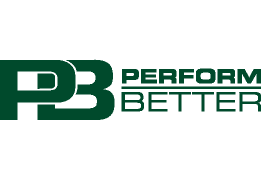Schools have competed against each other in sport since rules were agreed in games. They have also inferred their own status relative to the teams they play against. The fixture programme is not simply an organisational expedient of local teams; it has always implied something about both schools. The ancient public schools were reluctant to recognise the schools which were established in the late nineteenth century by granting them matches.
Sport is essentially a collaboration between schools to mutual advantage. No school can have a satisfactory competition programme without help from opponents who are prepared to operate teams in the same sports. Both sides allocate significant resources, providing facilities, transport and appropriately prepared and accompanied teams. The players and parents of both sides benefit from an improved experience. When schools invest in the arms race of facility development, their opponents also benefit, as access is shared every match day. Mutualism benefits everyone.
The standard of its marquee teams and performers is also perceived as a reputation- enhancer for schools. Often it is integral to its business purpose. Victories in national competition, or against local rivals, can be allowed to carry a significance that endures long after the final whistle. For that reason, there has been an exponential drive for improved standards of performance, of which the children involved are not the only beneficiaries. This has been accompanied by an uncontrolled growth in high performance programmes, specialist coaches, sports science support and an insatiable desire to identify and recruit promising performers. Sports Award programmes, which oscillate on either side of the ethical, can turn early maturing pre-teenagers into indentured labourers toiling to improve a school’s market position.
What happens when a school significantly improves the performance standards of its sport?
Initially, the impacts are often positive, leading to an orgy of self congratulation amongst the protagonists – often newly appointed heads. Recognition, reputation, recruitment all improve. Ironically perhaps, the response of competitors is positive. There is greater reflected glory in sitting at the high table of competition with the market leaders. The pain of defeat is sugared by the status of the fixture list.
But then, there is a tipping point. Once a school goes beyond competitive rivalry, everything changes. The implicit collaboration has collapsed. Its basis – that everyone benefits – is eroded, as the weaker team has no positive outcomes. The resources and achievements of the latter are revealed as inferior, even though they are no different from before. The cost of maintaining the collaboration is too great, so they exercise their right to seek a more appropriate competition programme elsewhere. It is a process described by a former Head Master of Wellington College as “disequilibrium”.
This can leave the gladiatorial teams of the newly improved school struggling to find matches of sufficient quality and quantity to meet the needs of the players, or the organisation’s appetite for self aggrandisement. They now have to travel further, with attendant costs and disruption. The programme of competition struggles to meet the needs of the average players, whose teams are dragged into accompanying the marquee teams to ever more distant block fixtures. Or else they are provided with an endless diet of one sided games.
Striving to improve is at the heart of human achievement. School sport is no different. However, the drive for high performance has an optimum point, beyond which the benefits begin to decline and disadvantages begin to proliferate. There is no school that has successfully pursued very high achievement in sport and not encountered negatives along the way. Embarking upon a journey to elite school sport needs to be controlled, with the end point clearly in mind. Competing so hard that collaboration collapses leaves only losers.
















